On DVD at last.
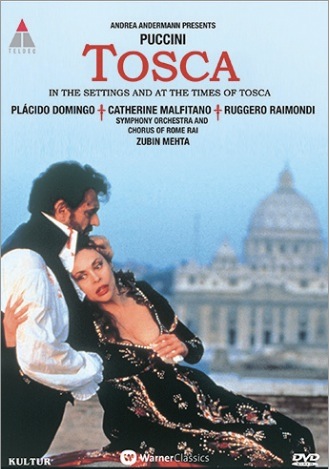
One of the enduring mysteries of the operatic world is that Andrea Andermann’s mythical production of Puccini’s Tosca was never transcribed to DVD. I had managed to copy my much worn VHS tape to a hard disk a few years ago but it was never a very satisfactory solution. The intrusive sub-titles could not be removed, the quality was not the greatest but there was no alternative.
If you have a child you wish to introduce to the seemingly forbidding world of Italian grand opera, there is no better place to start than with Puccini’s Tosca. It’s short, colorful, intensely dramatic, has clearly defined heroes and villains, involves torture, murder and execution – in fact just what the doctor ordered for any little boy! And the girls will revel in the beauty and vulnerability of the heroine and her surroundings.
Now, finally, the Tosca is available on DVD from Kultur.com and in Blu-Ray at that. My copy came from Amazon in standard definition, where it was packaged along with Manon Lescaut and La Fanciulla del West in a Placido Domingo album. The image quality on the DVD copy is decent, not breathtaking, you see the occasional jaggies in fast motion shots, but anything beats that old VHS transcription, and the sound is splendid. The aspect ratio is sadly 4:3, as were TVs of the time. Surely an unadulterated widescreen original exists somewhere in the vaults? By the way, there is no indication that the Blu-Ray version has been remastered, so I would not spend the extra over the standard definition DVD. Optional subtitles are in English, French, Italian and German, though why anyone would want to despoil the beauty of Italian by translation to brute German is quite beyond me. The language of command does not well suit that of love.
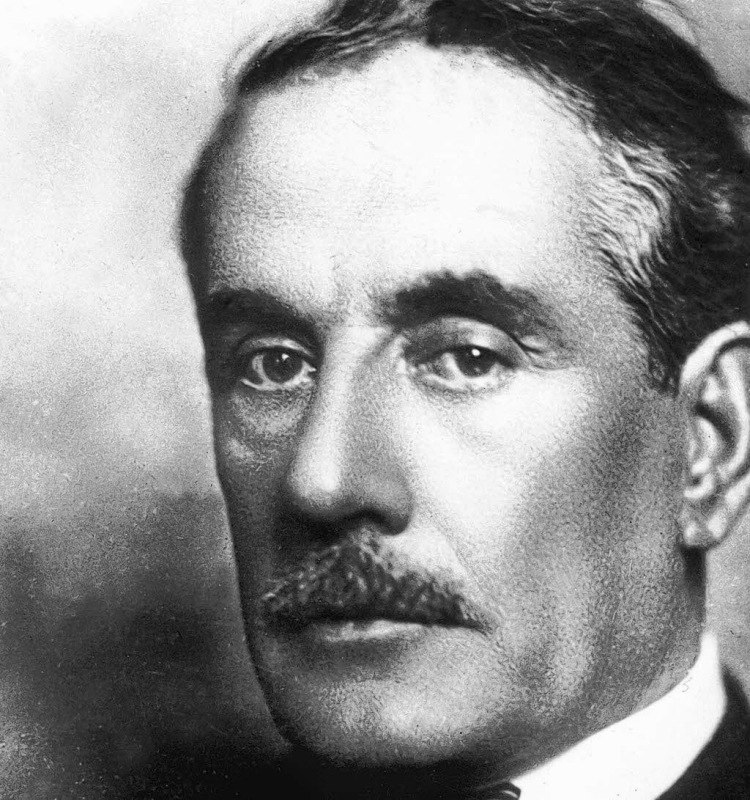
Giacomo Puccini.
For readers new to the opera, the plot could not be simpler. Set in 1800, Mario Cavaradossi is a revolutionary painter with Napoleonic republican ideals, in love with the actress Floria Tosca. Tosca is as beautiful as she is jealous of his association with the Marchesa Attavanti, whose portrait Cavaradossi is rendering in a wall fresco of the Catherdal of Sant’Andrea della Valle in Rome. The police chief Baron Scarpia wants to capture another revolutionary recently escaped from gaol, Cesare Angelotti, Attavanti’s brother, and believes he can get to him through Cavaradossi, a known associate. Scarpia tortures Cavardossi to get at Angelotti’s whereabouts but promises Tosca he will desist if she sleeps with him. She agrees but not until she has secured a release for Cavaradossi, which Scarpia pens right before she stabs him to death. Believing that Scarpia has ordered the use of dummy rounds at Cavaradossi’s execution by firing squad, she turns up for the ceremony and tells Cavaradossi, her lover, that all is well. But Scarpia has double crossed Tosca and real ammunition is used. Mario dies, and Tosca commits suicide.
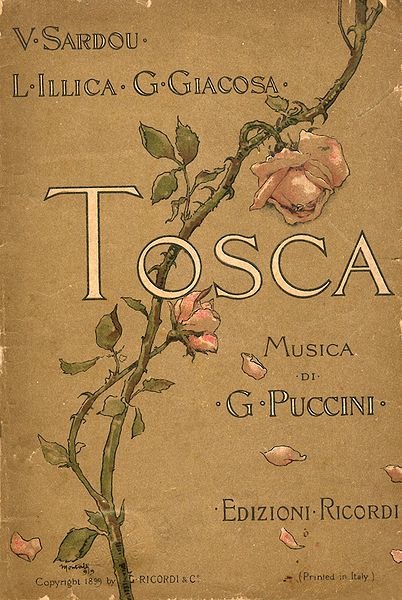
The original libretto. The first performance was in 1900.
At first you might think the artifice of staging in this production – the opera is performed in the original locations at the original times – is but a gimmick. Nothing could be further from the truth. Not only are the settings – the cathedral of Sant’Andrea della Valle, the police chief’s Palazzo Farnese headquarters and the prison of Castel Sant’Angelo – breathtaking, the great Vittorio Storaro does for the cinematography here what he did for Coppola in Apocalypse Now. Words cannot do either production justice.
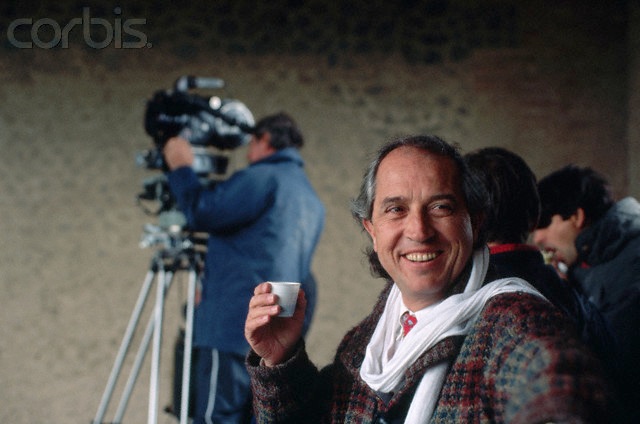
Vittorio Storaro.
The complexity of filming the opera live and hiding all the gear is no less remarkable. Everything is done right here. Nothing seems forced or rushed and the technology is mercifully nowhere to be seen outside the brief opening clips to each of the three acts.
So now you have the greatest cinematographer of our time, a more than competent conductor in Zubin Mehta, and the original settings made available to you, what do you do? Why, get the three greatest opera singers of the time and give them their heads. But describing Catherine Malfitano, Placido Domingo and Ruggero Raimondi as opera singers does not begin to do them justice.
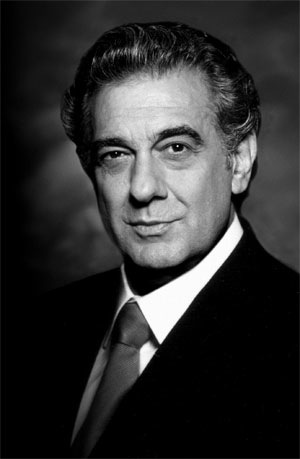
Placido Domingo.
Clint Eastwood should be relieved that the Oscars are limited to movies. His ‘Unforgiven’ pretty much swept the board in 1992, when this version of Tosca was first released. His Best Director award would have gone to Gianfranco de Bosio, Best Actor to Raimondi (his voice unforgettably choked with lust at the moment he thinks he can finally possess Tosca, his body language saying everything about power and its abuse) and Best Picture to Tosca. And much as I admire Emma Thompson and her well deserved Best Actress award that year, no one, but no one, could hold a candle to Catherine Malfitano’s Tosca.
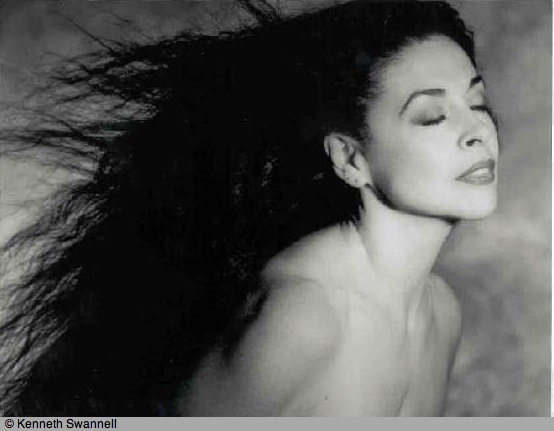
Catherine Malfitano. A woman possessed.
The finest acting performances are without exception those where the actor subsumes the role, living it as one. Until 1992 that honor belonged to Dirk Bogarde in Luchino Visconti’s Death in Venice (still not out in Blu-Ray – what is it with these people?). His subsequent nervous breakdown and absence from the studios for an extended period testify to the fact that no acting was involved. Bogarde was Gustav von Aschenbach.
And in no lesser a way, Malfitano is Floria Tosca.
It’s not enough to have a superb soprano voice, be one of the great beauties of our time, and have the ability to render seemingly dozens of facial expressions in seconds. You must also be able to act and her performance would head an Oscar sweep if one was but possible. It is as exhausting to watch for her passion and intensity as it must have been to perform. By the time of the final act, at 6am in Rome, as Cavaradossi (Domingo) goes to the firing squad atop Castel Sant’Angelo, Malfitano is a complete wreck. It is written all over her face and body. She has lived a decade in the past 24 hours and now stands at the moment of triumph, only to have all her hopes and dreams shattered in the closing moments of the opera. You will gasp, shout, cry, exult, rejoice, despair and generally end up in her state by the time the opera ends when she leaps to her death from Castel Sant’Angelo to the Roman street below. Exhausting, and there is not anything remotely like it in the movies.
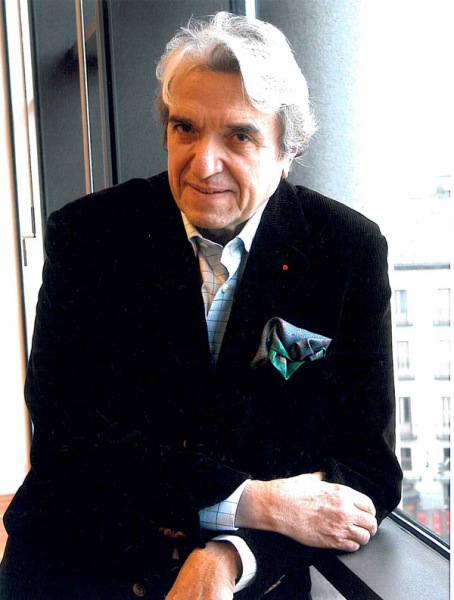
Ruggero Raimondi.
What about those locations? I have a special affinity for them as my mum, The Countess, spent a couple of joyous years – 1937-8 – living a stone’s throw away. (She would spend the following five under Nazi occupation in her native Poland, while discovering that titles are generally not worth the parchment they are written on). Educated in the romance languages and the arts, it was a short walk from her Roman pensione to the 16th century Sant’Andrea della Valle, built at the very height of the Renaissance. It was her local Church. Receiving Communion there one Sunday, her purse was stolen by a fellow communicant at the altar rail. She used to love telling that story as much as I enjoyed hearing it, all forgiven in our shared love of things Italian.
Palazzo Farnese, the French Embassy to this day, is another Renaissance masterpiece, its architects including that painter of ceilings who went on to work down the road in the Sistine Chapel. And Castel Sant’Angelo, the cylindrical prison with impenetrable walls and a shooting gallery on the roof dates back almost two thousand years to Hadrian, offering refuge to more than one Pope over the centuries. Quite where the angels come into the naming of a prison is hard to fathom, and pretty it is not, but like all these things it’s intended as a monument to the power of the state.
The way The Countess would reminisce of those days included many tales of the lecherous Italians and their bottom pinching ways, despite the presence of her chaperone at all times. She was 23 at the time and history confirms she had more money than fiscal sense. The Germans saw to the former and, much later, I provided the latter. She did me the great good favor of introducing me to opera, if little else.
Throughout Tosca Puccini’s music soars, exults, revolts, sings, weeps and generally tells you why this is the most enduring opera ever. There are no longueurs, no moments where you wish you were elsewhere, no nodding off, no waiting for the intermission. Why, there is not even an overture. The whole thing is under two hours in length, suited to modern movie attention spans.
Here are some favorite images from the production:
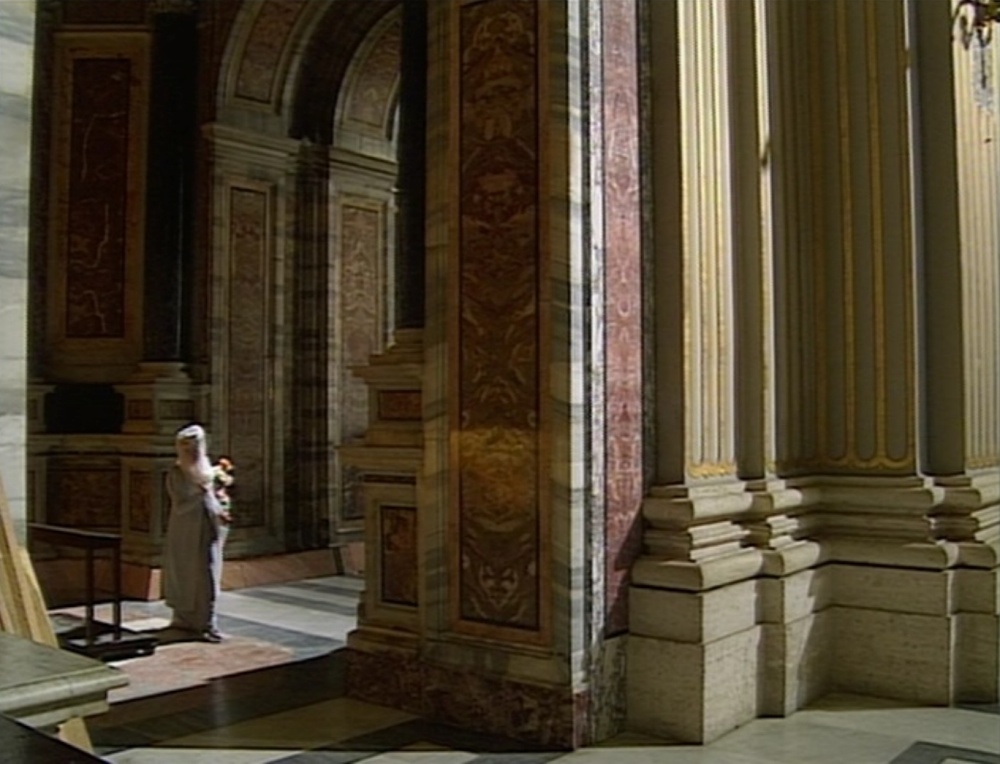
Tosca enters Sant’Andrea della Valle.
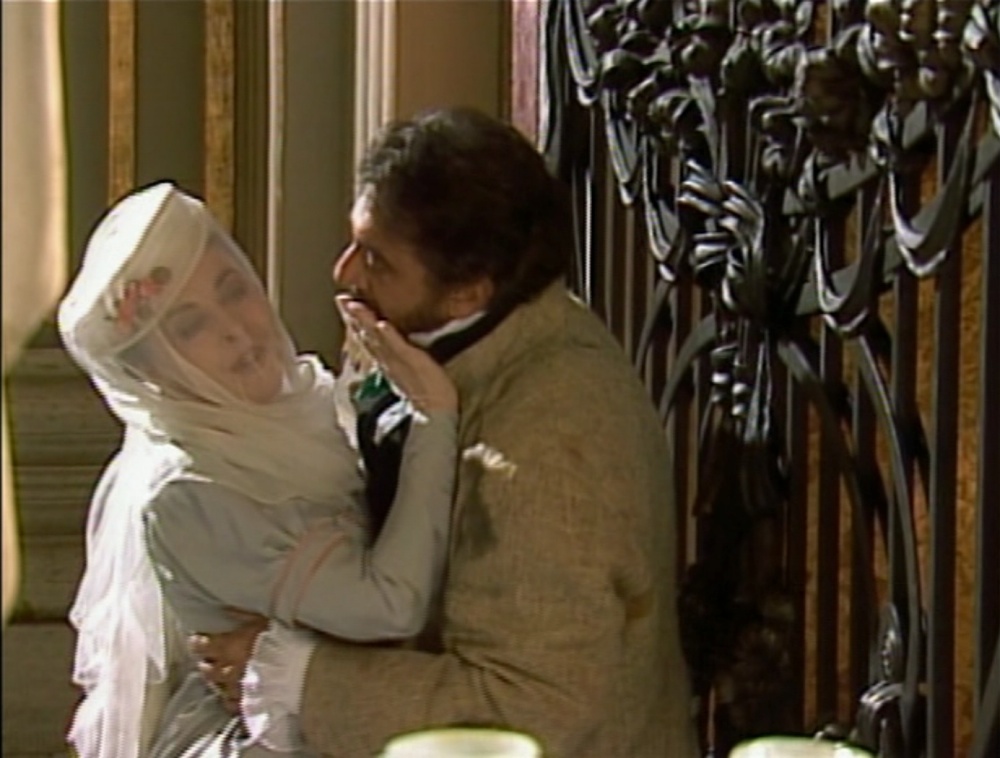
In passionate love, Tosca and Cavaradossi share a duet. Quite how one survives 100 decibels
of Placido Domingo eight inches distant from your ears is a mystery to me.
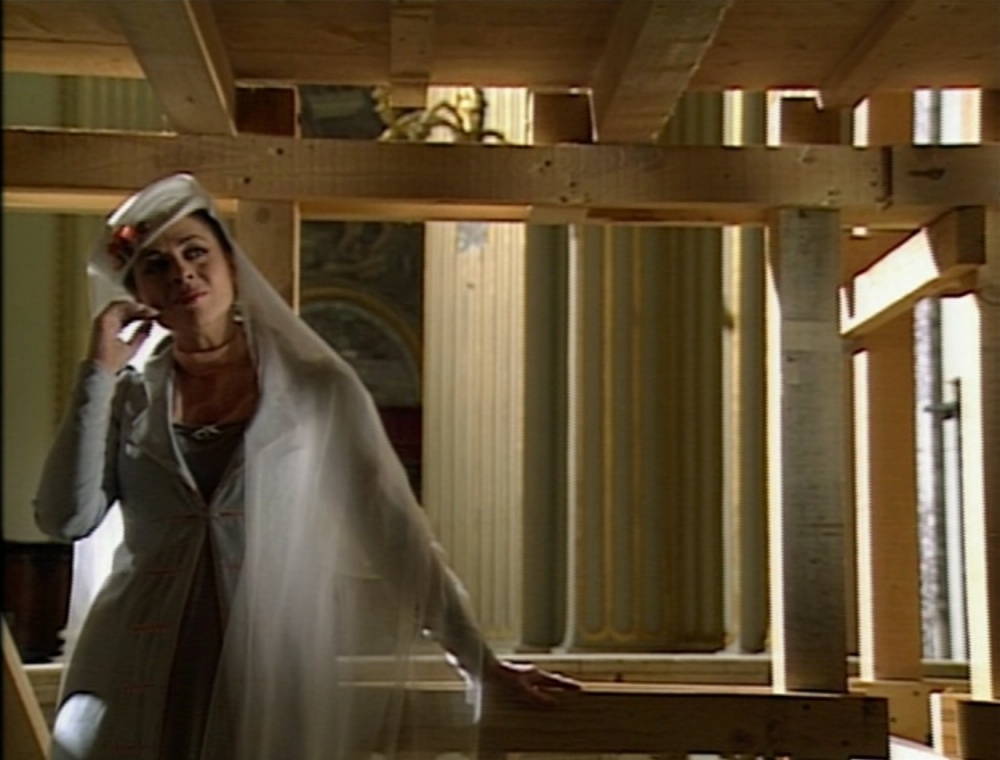
The beautiful actress gives the performance of a lifetime. Here she is, wonderfully lit
and photographed, beneath the platform on which Cavaradossi is painting the fresco.
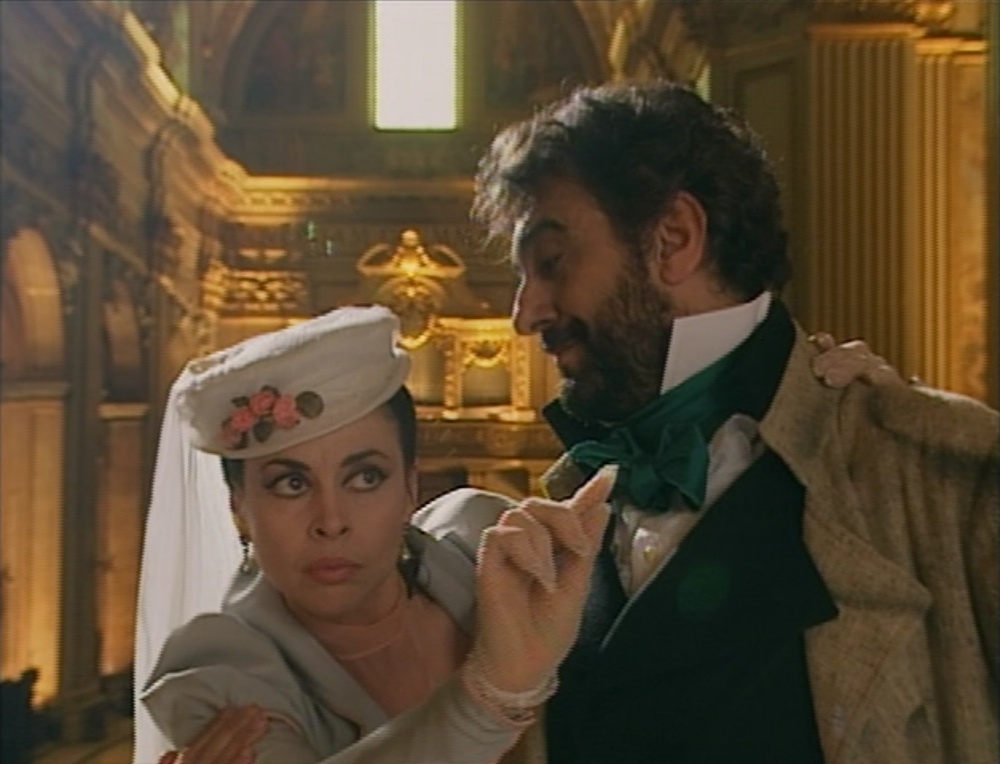
Tosca chides Cavaradossi who is painting the Attavanti chapel portrait of the eponymous blonde.
“But make her eyes dark, Mario”. Italy has long excelled at combining sacred and secular art.
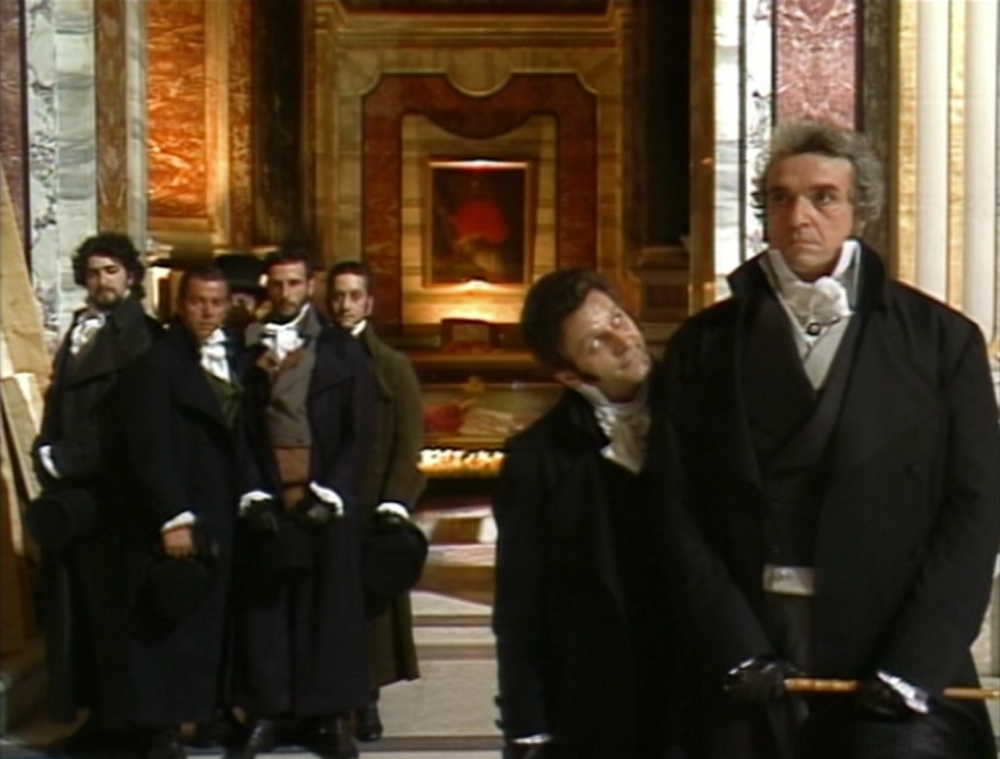
Scarpia’s first appearance. Raimondi has overwhelming stage presence – check the obsequious
Spoletta, his sidekick, on his right shoulder. The composition would make Raphael proud.
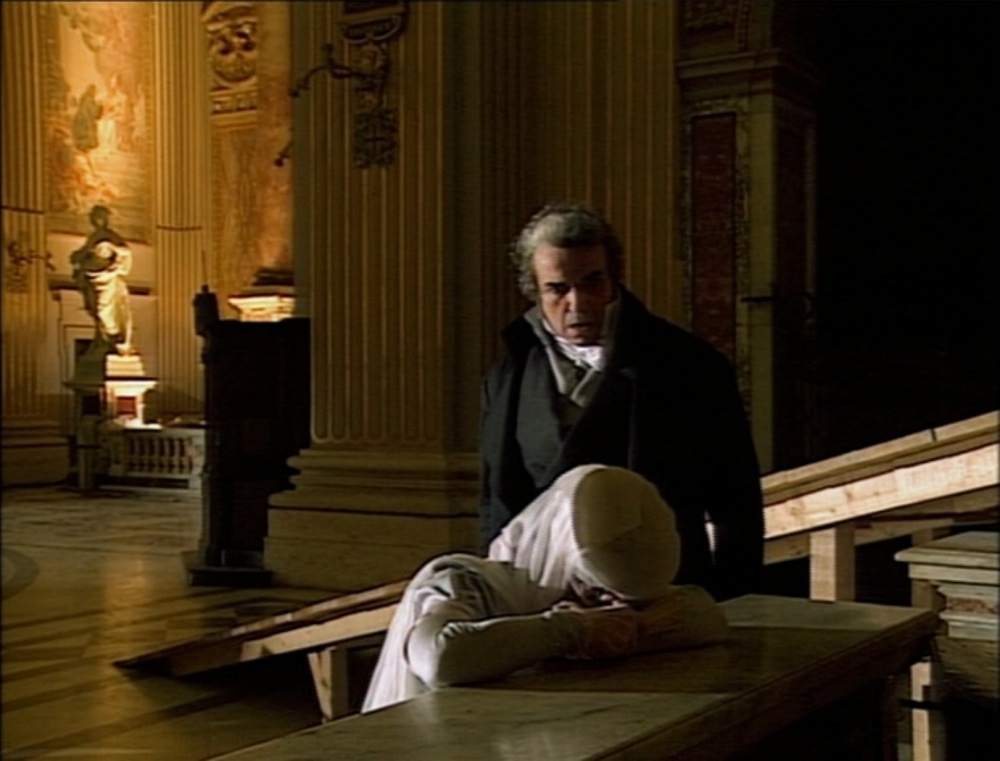
The cruel police chief, Scarpia, offers freedom for Cavaradossi in exchange for sexual favors. Just
look at the cinematography and Raimondi’s body language. Police brutality has been all downhill since.
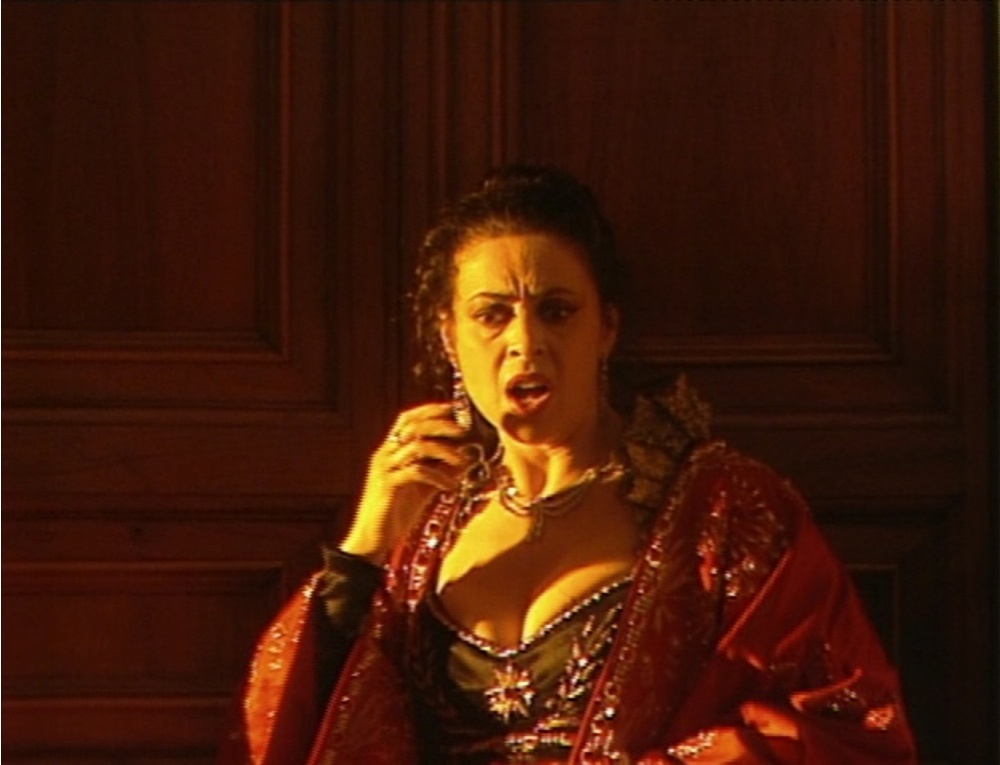
Palazzo Farnese: Vittorio Storaro renders Malfitano in the
light of Caravaggio, as Tosca agonizes over Mario’s fate.
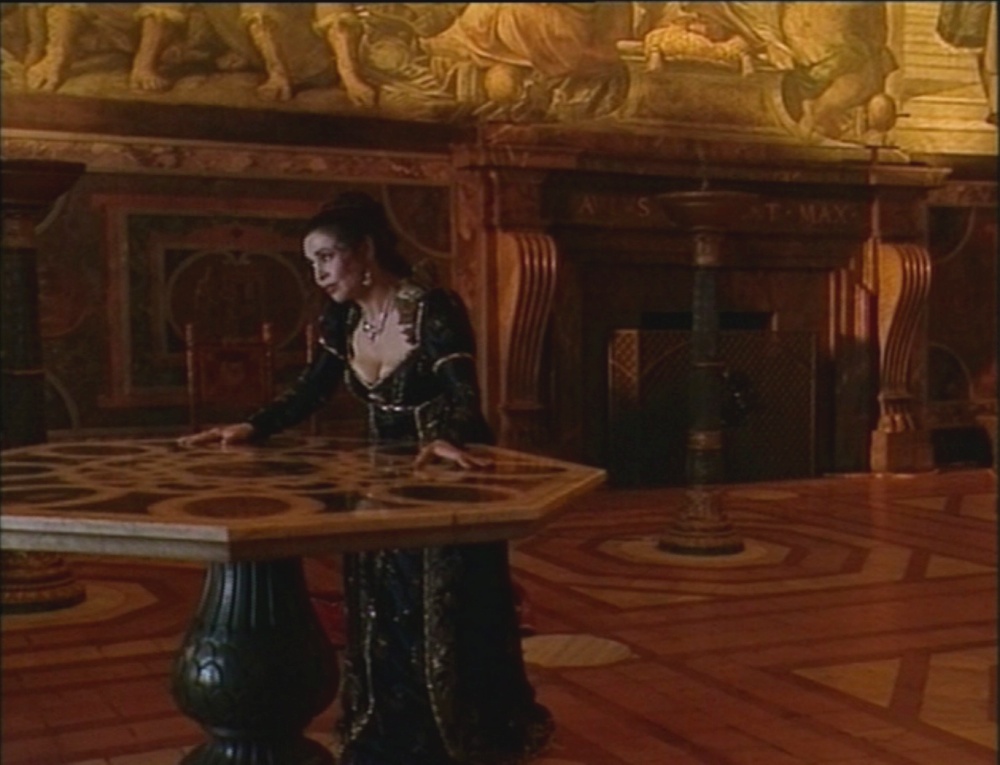
“Vissi D’Arte, vissi d’Amore”. I have lived for art, I have lived for love.
Malfitano soliloquizes over her fate as Scarpia tortures Cavaradossi.
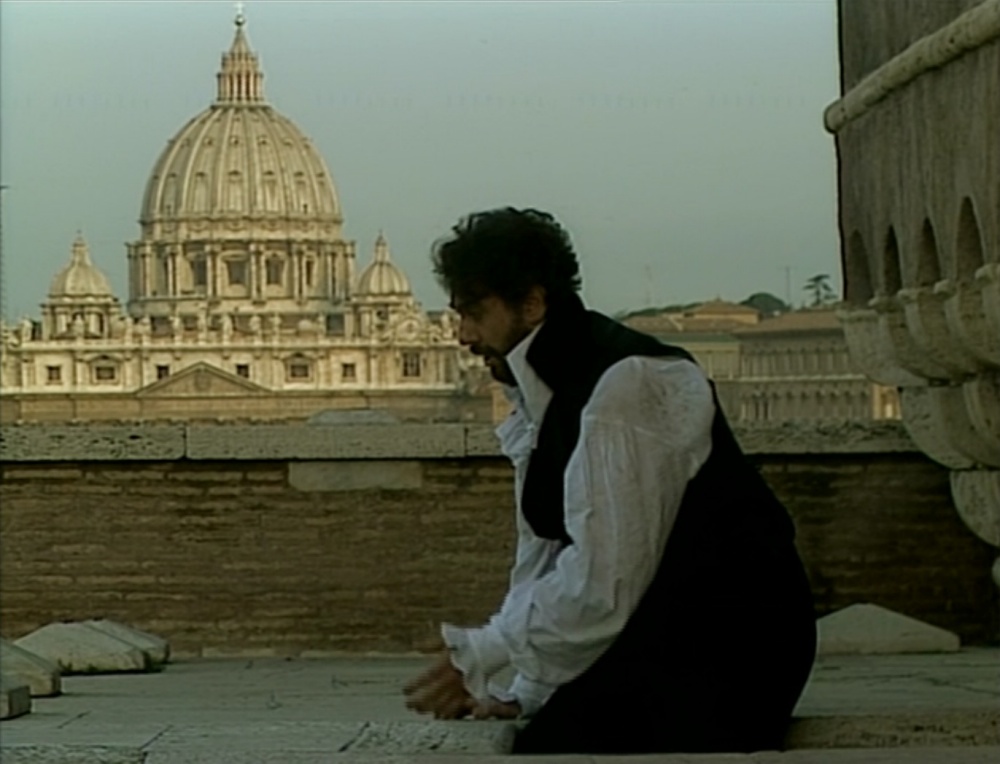
“E lucevan e stelle”. And the stars were shining. Atop Castel Sant’Angelo, Cavaradossi
prepares for the firing squad, St. Peter’s in the background.
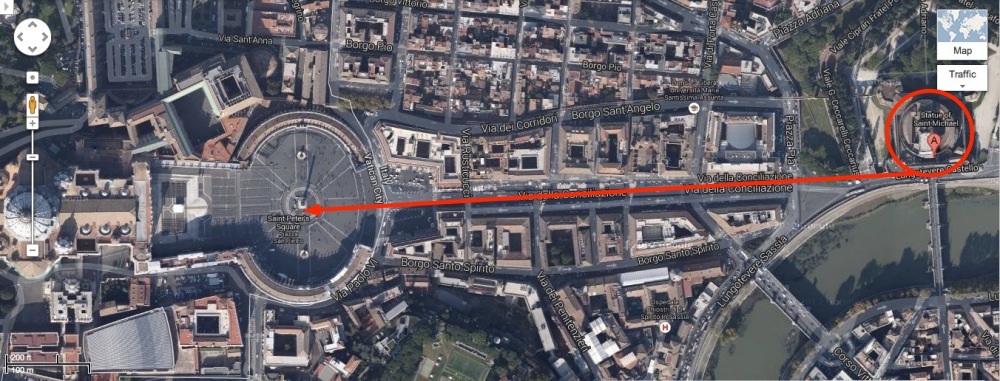
But 1,000 yards from St. Peter’s.
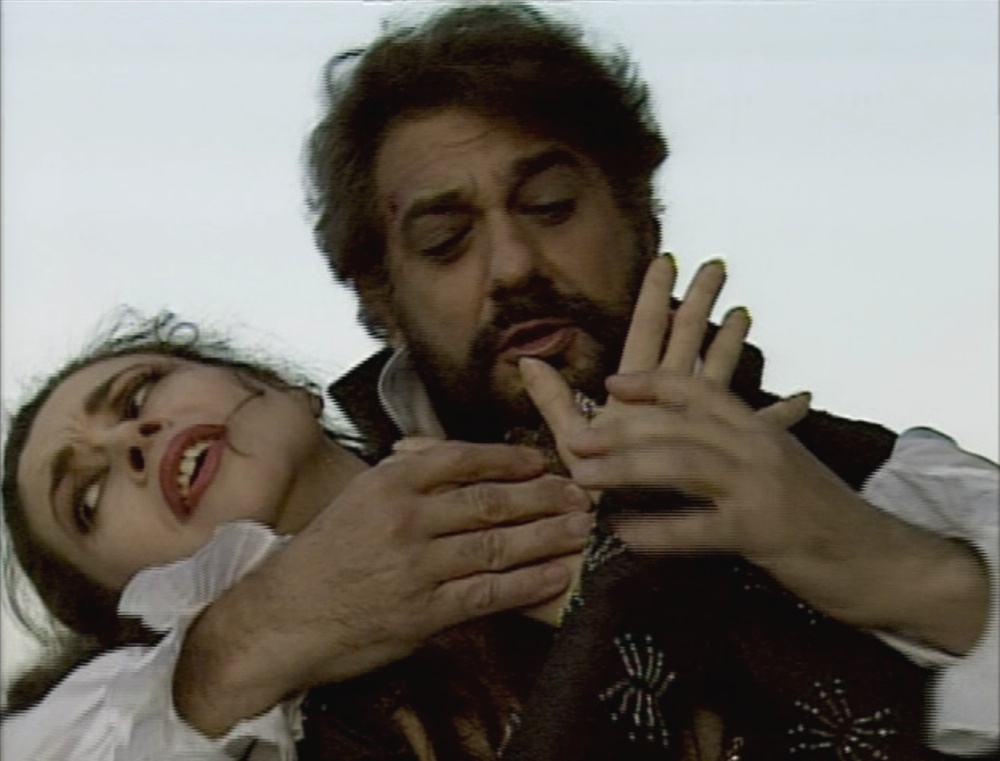
Cavaradossi wonders how Tosca’s delicate hands could be the same which wielded the weapon used
to kill Scarpia just hours ago. Malfitano is simply in a state of emotional ecstasy here.
You will not see the likes of this anywhere.
It matters not whether you like opera or Italian singing. Tosca is an orgy for the emotions and the eyes and should be in your collection.
A note on alternatives: There is one other video performance worthy of attention. Forget the one with Anna Gheorgiu, Roberto Alagna and Ruggero Raimondi (again). The production is such a mess, with pretentious cutting between set and studio, it’s impossible to watch, despite Gheorghiu’s decent, if overrated voice.
The one to seek out has the spinto soprano Raina Kabaivanska, a porcelain beauty, joined by a fascinating Scarpia in the shape of Sherrill Milnes and Placido Domingo again reprising his role as Cavaradossi. On purely technical grounds, Kaibaivanska has it over the dramatic soprano of Malfitano, spinto meaning a high set voice with an extended range of great beauty. I never cease to wonder how so delicate a body can produce such a big sound. But what Kabaivanska – whom I adore – lacks, is Latin passion, something Malfitano has in abundance. The American baritone Sherrill Milnes has great presence as Scarpia, in no small part thanks to his sheer bigness, and a sonorous voice. He uses a great range of expressions from playful to evil but the problem is that he is just too young to have the gravitas of Raimondi in the Andermann production. Don’t let that put you off, as the performances here have a lot to offer. Interestingly, the opera starts with an extensive long shot of Angelotti escaping from Castel Sant’Angelo to hide out in Sant’Andrea della Valle – Google Maps has it as a sixteen minute walk, so I imagine Angelotti got it down to under ten!